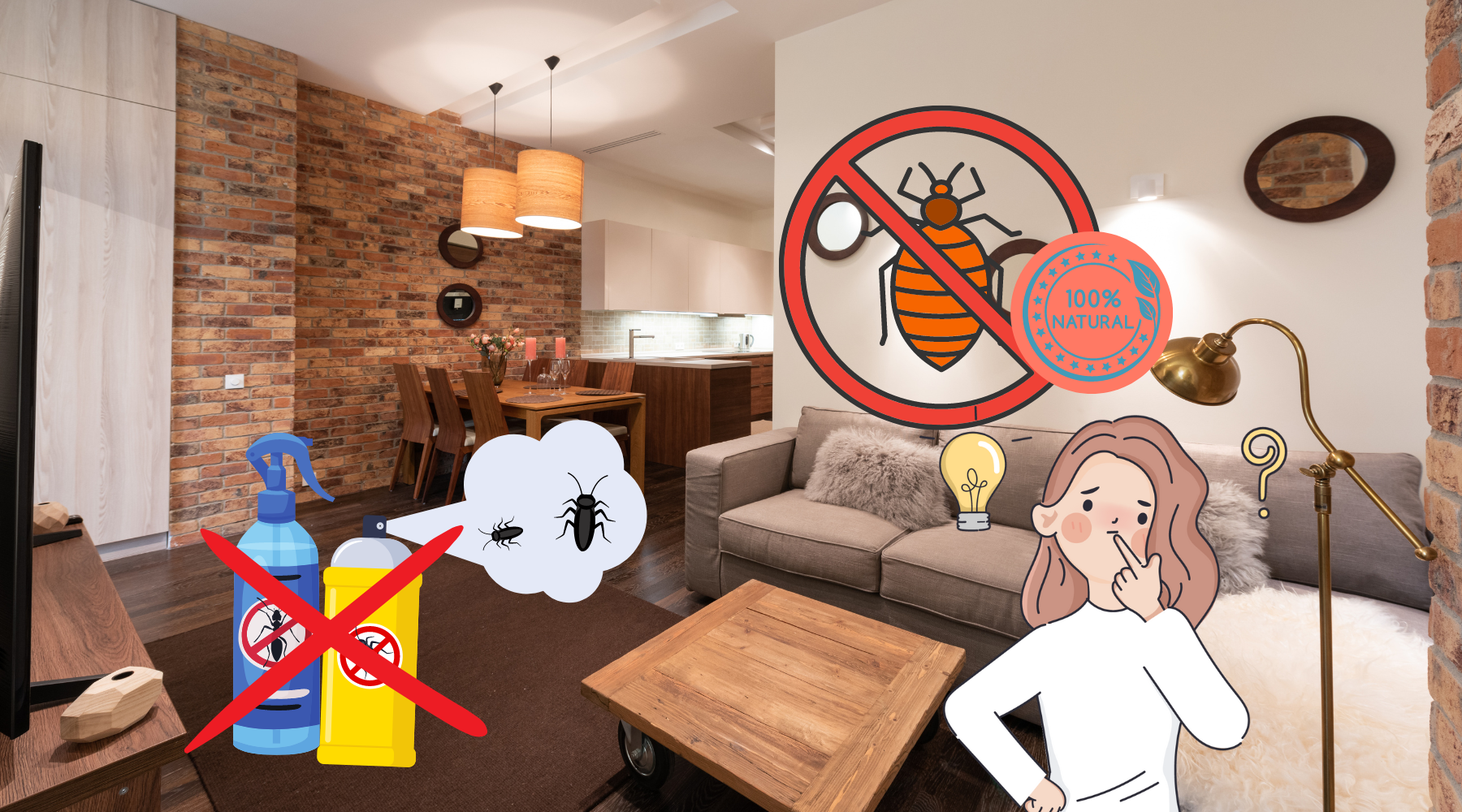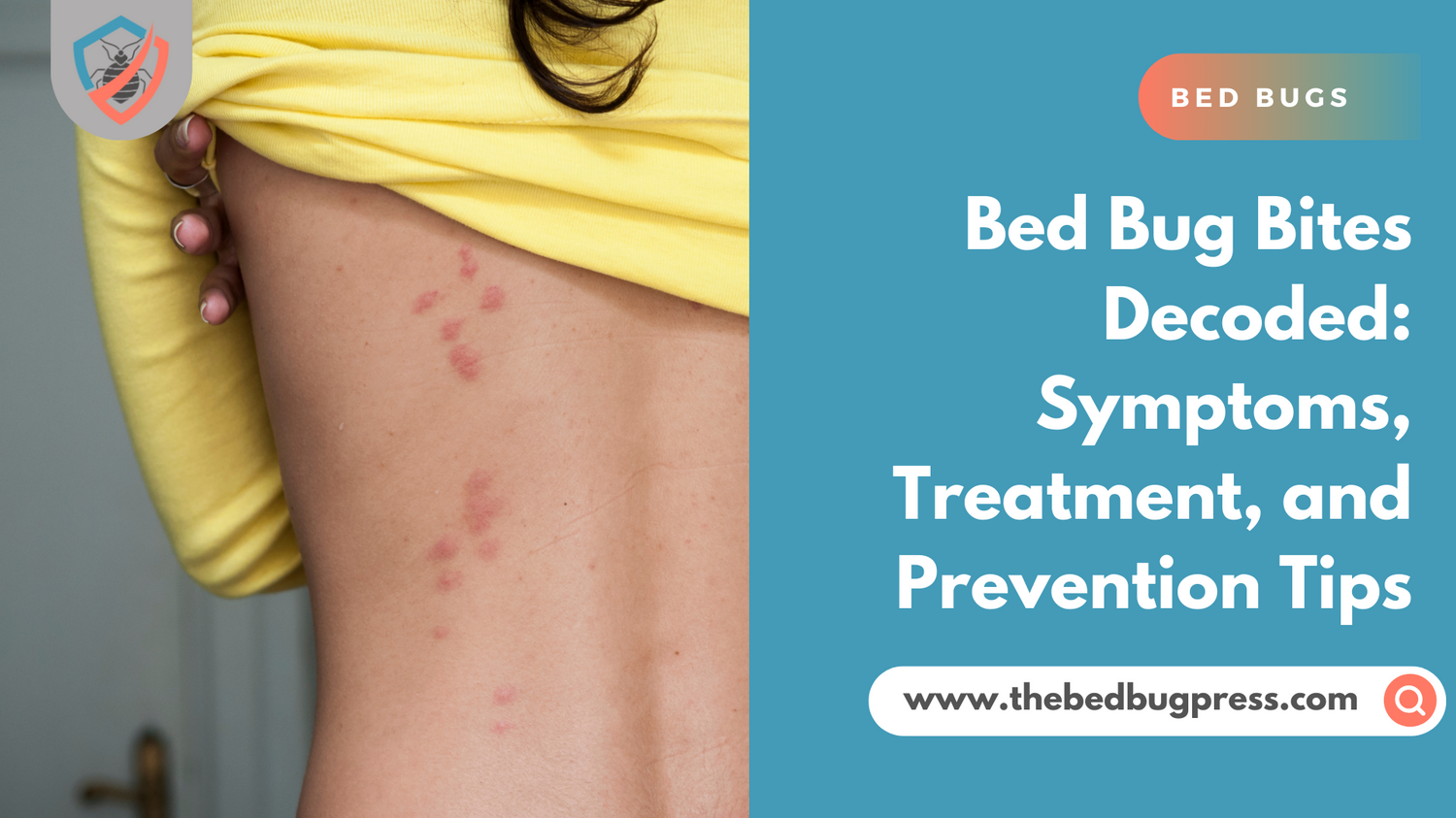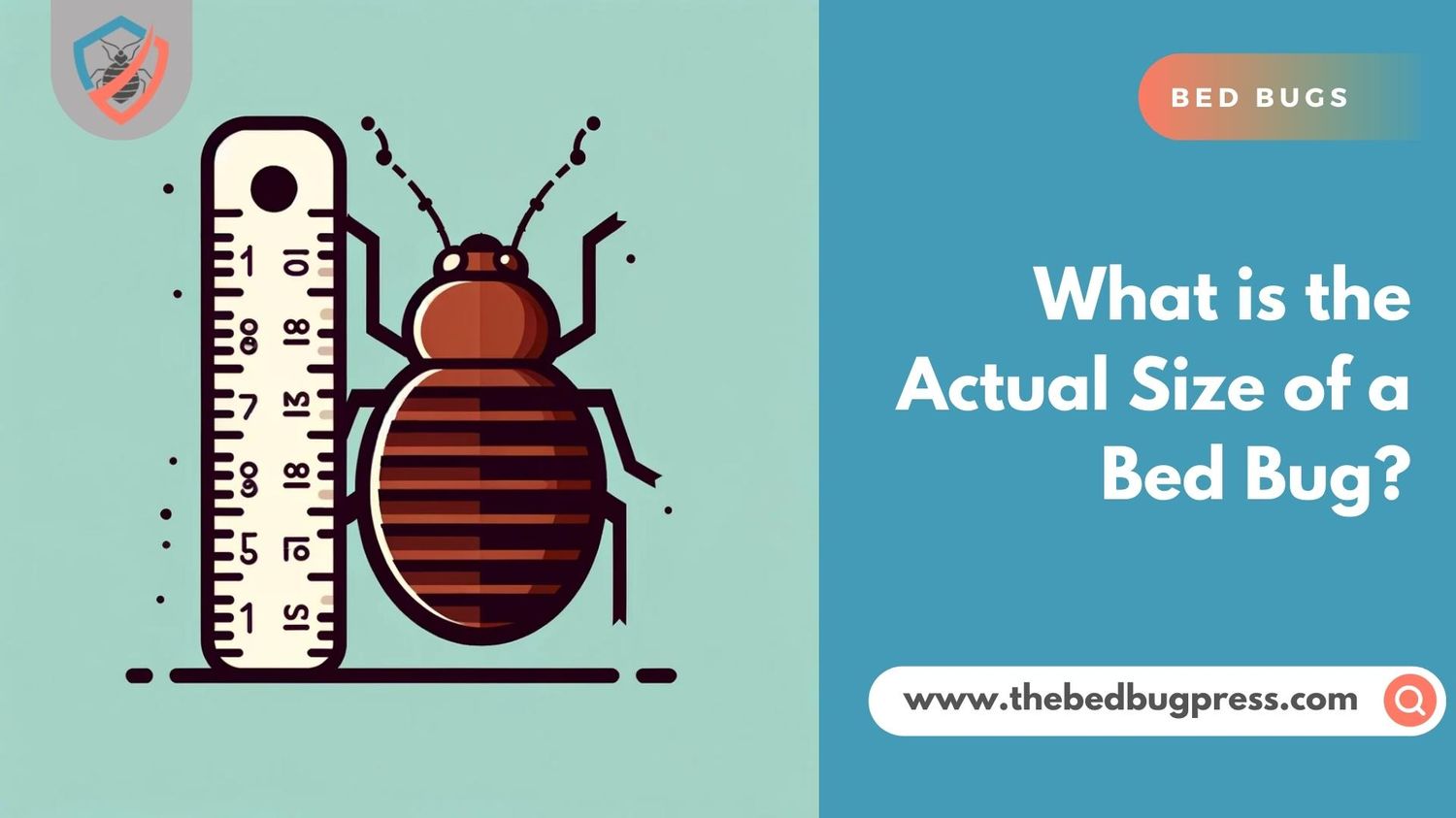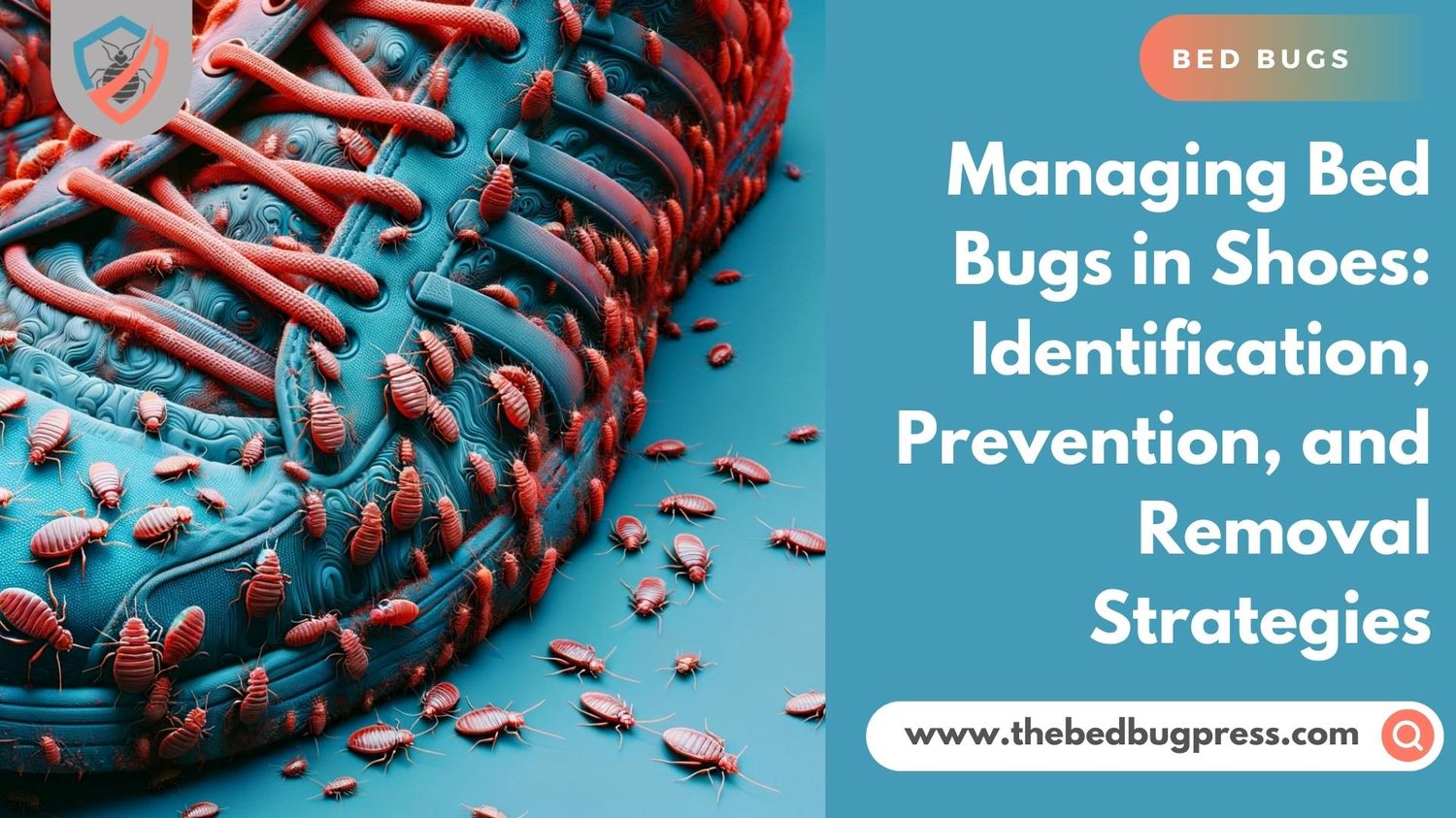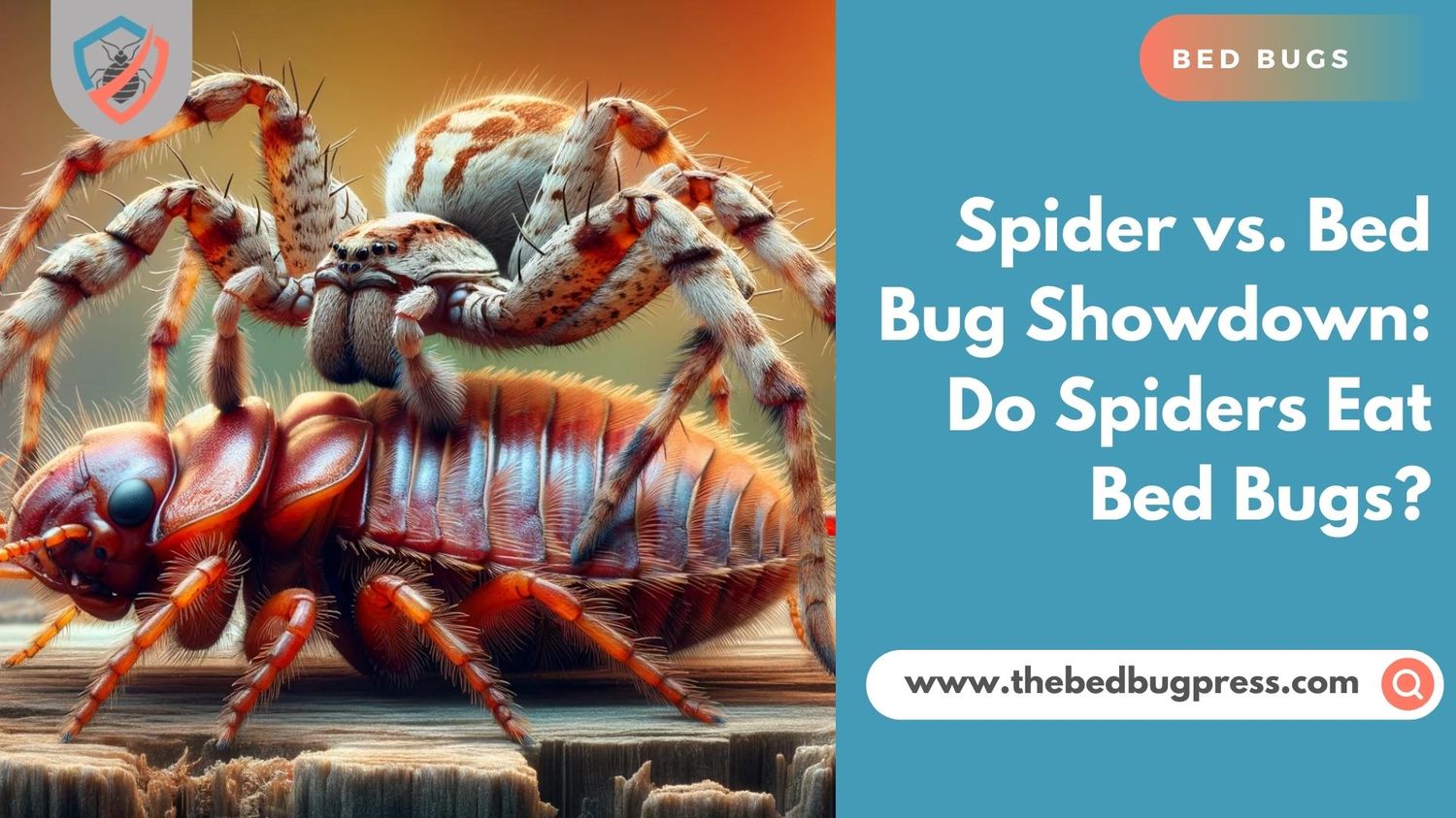If you have ever endured the torment of dealing with bed bug infestations, you are well aware of the disruptive and distressing impact they can have. However, there is no need to despair, as this article aims to equip you with natural remedies that effectively eliminate bed bugs while prioritizing the well-being of both your surroundings and your loved ones.
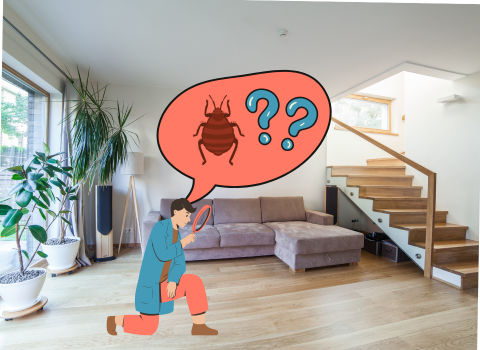
How To Tell If I Have Bed Bugs?
First, we’ll equip you with the knowledge to identify the signs of a bed bug invasion, from their notorious bites to the dark spots they leave behind. Armed with this awareness, you can take immediate action and halt their spread.
Furthermore, we will guide you in understanding the behavior and habits of bed bugs, empowering you to detect their presence even in the early stages of an active bed bug infestation.
By recognizing their hiding spots, such as mattresses, furniture, and cracks in walls, you’ll be able to swiftly respond and implement targeted measures to stop the bed bugs in their tracks. With this knowledge, you can confidently reclaim your home and prevent further discomfort caused by these unwelcome intruders naturally.
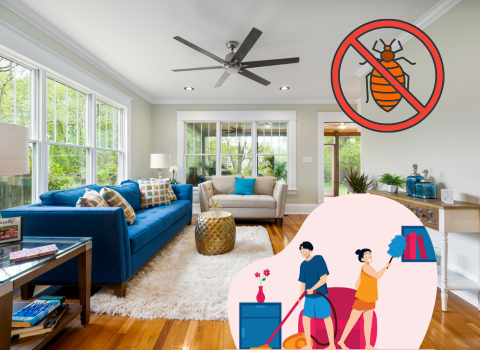
Tips on Preparing Your Home for Bed Bug Treatments
Whether you’re planning to hire professional exterminators or handle the bed bug infestation yourself, taking the necessary steps to ready your space is crucial for a successful outcome.
Below are practical tips and guidance on how to effectively prepare your home for bed bug treatments, ensuring that these resilient pests are eradicated once and for all.
Clear and Declutter:
Remove clutter from the affected areas, such as clothing, bedding, and personal items.
Vacuum the entire room, paying close attention to cracks, crevices, and furniture seams.
Dispose of any unnecessary items or belongings that may serve as hiding spots for bed bugs.
Launder and Bag:
Wash all washable fabrics, including bedding, linens, clothing, and curtains, in hot water.
Dry them on high heat to kill any remaining bed bugs.
Place clean items in sealed plastic bags to prevent re-infestation.
Seal Cracks and Crevices:
Inspect and seal cracks, gaps, and crevices in walls, floors, and furniture using caulk or sealant.
Repair any damaged wallpaper, loose baseboards, or peeling paint to eliminate potential hiding spots for bed bugs.
Remove Wall Hangings:
Take down wall hangings, such as picture frames and mirrors, from the treated rooms.
Inspect them for signs of bed bugs and clean them thoroughly before returning them.
Disassemble Furniture:
If possible, disassemble furniture, such as bed frames and nightstands, to access hidden areas where bed bugs may be hiding.
Clean and vacuum all furniture components, paying attention to joints, seams, and crevices.
Inform Your Neighbors:
If you live in an apartment complex or shared building, inform your neighbors about the bed bug infestation.
Encourage them to inspect their own units and take appropriate measures to prevent the spread of bed bugs.
By following these simple yet crucial steps to prepare your home for bed bug treatments, you’re laying the foundation for a successful extermination process.
Remember, thorough preparation enhances the effectiveness of treatments and helps eliminate any lingering bed bugs. Stay diligent and proactive throughout the process, and soon you’ll be able to reclaim your home, free from the nuisance of bed bugs.
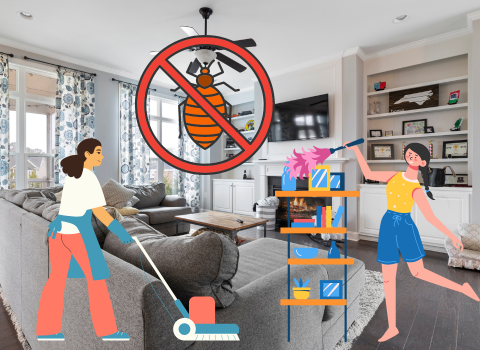
Steps to Get Rid of Bed Bugs Naturally
Dealing with a bed bug infestation can be stressful, but rest assured, there are effective and eco-friendly methods for eliminating bed bugs quickly.
Below are step-by-step instructions on how to naturally eradicate bed bugs from your home, ensuring a swift and efficient solution to this common problem.
Identify Infested Areas:
To effectively tackle a bed bug infestation, it’s important to first identify the areas that are infested. Look for signs of bed bugs, such as bites on your body, blood stains on bedding, dark spots of fecal matter, and discarded exoskeletons.
Take the time to inspect mattresses, upholstered furniture, soft furniture, and cracks in walls to pinpoint the extent of the infestation. By understanding the scope of the problem, you can tailor your treatment approach accordingly.
Deep Clean and Vacuum:
Deep cleaning plays a crucial role in reducing bed bug populations. Start by removing clutter from the infested room, as it provides additional hiding places for the pests. Vacuum the entire room, paying special attention to mattresses, furniture seams, and baseboards where bed bugs are likely to hide.
Be thorough in your vacuuming and dispose of the vacuum bag or clean the canister thoroughly to prevent any bed bugs from escaping and re-infesting the area. It’s recommended to use a HEPA vacuum cleaner that is specialized in filtering tiny particles, ensuring that bed bugs and their eggs are effectively trapped and prevented from spreading to other rooms as you vacuum.
Wash and Dry on High Heat:
Launder all bedding, bed sheets, linens, clothing, and curtains in hot water. High temperatures kill bed bugs and bed bug eggs found in the fabric. After washing, make sure to dry them on high heat settings as well.
Bed bugs are highly sensitive to heat, and exposure to high temperatures will quickly eliminate them. By laundering and drying your items thoroughly, you can ensure the elimination of any bed bugs hiding in your fabrics.
Steam Bed Bug Treatment:
Utilizing a high-temperature steam cleaner is an effective method for treating infested areas. Focus on mattresses, furniture, and cracks where bed bugs tend to hide. The heat from the steam will penetrate deep into the surfaces, effectively killing bed bugs at all stages of their life cycle.
Make sure to use a steam cleaner with the appropriate attachments to reach into cracks and crevices where bed bugs may be hiding. Steam treatment is a natural and chemical-free method to combat bed bugs, making it a safe option for use in your home.
Natural Repellents:
Natural repellents can be a useful addition to your bed bug control efforts. Essential oils such as lavender, peppermint, or tea tree oil are known for their insect-repellent properties. Mix a few drops of your chosen essential oil with water in a spray bottle and apply it to areas prone to infestation, such as mattresses, furniture, and baseboards.
The strong scent of these oils can help deter bed bugs from these areas and reduce their activity.
Diatomaceous Earth (DE):
Diatomaceous earth, a natural powder made from fossilized remains of diatoms, can be an effective tool in controlling bed bug populations. Apply food-grade diatomaceous earth to cracks, crevices, and other hiding spots where bed bugs may be present.
Diatomaceous earth works by damaging the bed bug’s exoskeleton, ultimately leading to its demise. While it may not kill bed bugs quickly, it is an effective method for controlling their populations over time.
Be sure to use food-grade diatomaceous earth, as other forms may contain additives that can be harmful to humans or pets.
By following these steps, you can take a natural and pesticide-free approach to control bed bugs in your home. Identify the infested areas, deep clean and vacuum, launder and dry on high heat, use steam treatments, employ natural repellents, and consider the use of diatomaceous earth. With persistence and a comprehensive approach, you can effectively combat bed bugs and create a more comfortable living environment.
As you follow these steps on how to remove bed bugs naturally and fast, you can tackle the bed bug infestation effectively while maintaining a chemical-free environment.
Keep in mind that swift action and consistency are key to achieving successful results for your bed bug problem. With patience and diligence, you’ll be able to reclaim your home and enjoy a bed-bug-free environment.
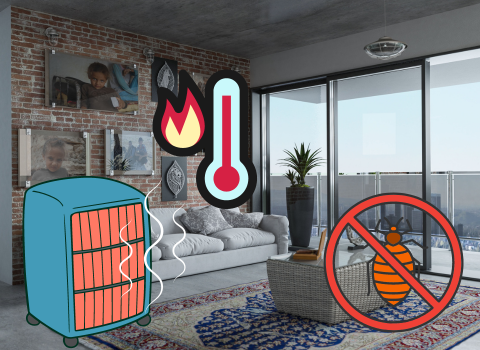
Additional Natural Remedies Control Bed Bugs
There are more bed bug control methods that you can do at home. Below are additional bed bug treatment methods you can do at home:
Heat Treatments
Heat treatment is a highly effective method for killing bed bugs and their eggs. By utilizing high temperatures, you can eliminate these pests from infested items. Start by washing infested bedding, linens, and clothing in hot water. The high temperatures will quickly kill bed bugs and their eggs. After washing, make sure to dry these items in high-heat settings as well, as the heat will further ensure the elimination of any remaining bed bugs.
One of the advantages of heat treatment when dealing with a bed bug infestation is its ability to kill bed bugs instantly upon contact. The high temperatures penetrate their bodies, leading to their demise. By employing heat treatment, you can rapidly get rid of bed bugs from your belongings and prevent them from spreading further.
For items that cannot be washed, such as soft toys or shoes, there are alternative methods to apply heat treatment. Place these items in a dryer on high heat, ensuring that the temperature reaches levels that can effectively kill adult bed bugs. Alternatively, you can seal these items in a plastic bag and leave them in direct sunlight for a few days. The intense heat from the sun will create an environment that is inhospitable for bed bugs, ultimately leading to their eradication.
By utilizing heat treatment, whether through washing and drying infested items or applying heat to non-washable items, you can effectively get rid of bed bugs and their eggs. Heat treatment kills bed bugs instantly but is a safe and efficient method that avoids the use of chemicals. Thus, making it an ideal choice for those looking for natural bed bug treatment options.
Fact: Did you know that heat treatments can be used as a stand-alone treatment for killing bed bugs? Even pest control professionals swear to the effectiveness of heat treatments in targeting all areas of an infested room and killing bed bugs and bed bug eggs wherever bed bugs hide. This can be used to get rid of bed bugs permanently and eliminate your bed bug problem.
Encase Mattresses and Box Springs:
One effective method to prevent bed bugs from infesting your mattresses, box springs, and pillows, or to trap existing bed bugs inside, is to encase them in bed bug-proof covers.
Encase mattresses, box springs, and pillows in bed bug-proof cover to prevent bed bugs from infesting them or to trap existing bed bugs inside.
Make sure to choose encasements specifically designed for bed bugs, with a zipper closure and tight weave to prevent escape.
Freezing:
Extreme temperatures can be used to kill bed bugs. Place infested items in sealed plastic bags and freeze them for several days.
Ensure that the temperature remains consistently below freezing to effectively eradicate bed bugs.
The extreme cold will effectively kill the bed bugs and their eggs, leading to their eradication. Freezing is a non-toxic and chemical-free method that can be used to treat certain items that may not be suitable for other heat treatments.
However, it’s important to note that freezing may not be effective for larger items or heavily infested furniture, as reaching and sustaining the necessary temperatures can be challenging.
Bed Bug Traps:
Bed bug traps are valuable tools to help you monitor and capture bed bugs in your home. These traps are typically designed with sticky or glue-like substances that bed bugs get trapped in.
Place traps near beds, furniture, and other infested areas to catch and monitor the presence of bed bugs.
Traps kill bed bugs naturally as it prevents the bed bugs from escaping and feeding further from human hosts.
Bed bug traps serve as a useful tool in detecting the extent of the infestation and evaluating the effectiveness of your control measures. Additionally, bed bug traps also act as a natural way to kill the pests.
Once trapped, bed bugs are unable to escape or feed further from human hosts, disrupting their lifecycle and ultimately leading to their demise. Incorporating bed bug traps as part of your bed bug control strategy can help you identify and manage these pests effectively.
Some types of bed bug traps include:
Climb-up interceptors:
These traps are placed under the legs of beds and furniture, creating a barrier that bed bugs cannot climb.
DIY sticky traps:
This DIY bed bug treatment can be done by applying a double-sided tape or sticky substance to cardboard or other materials.
CO2 traps:
Bed bugs are attracted to carbon dioxide. CO2 traps release this gas to lure bed bugs and trap them.
Baking Soda:
Sprinkling baking soda on infested areas can help dehydrate and eliminate bed bugs. Apply a generous amount of baking soda to mattresses, carpets, and other affected surfaces. Leave it for a few days before vacuuming thoroughly to remove dead bed bugs and baking soda residue.
Rubbing Alcohol:
Rubbing alcohol can be used to kill bed bugs on contact. Use a spray bottle filled with rubbing alcohol and directly spray it on bed bugs, their eggs, and infested areas. Use caution and ensure proper ventilation when using rubbing alcohol.
By incorporating these home remedies for bed bug control into your battle plan, you can take proactive steps to eliminate bed bugs using natural and easily accessible methods. Remember, consistency and thoroughness are key to success.
Combine these remedies with regular cleaning and preventive measures to create an inhospitable environment for bed bugs. With perseverance, you’ll be able to reclaim your space and enjoy a home with bed bug infestations.
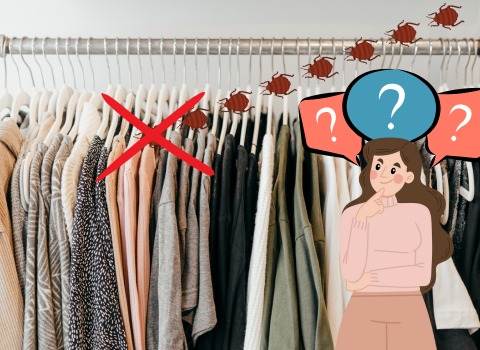
How to Get Rid of Bed Bugs in Clothes
Dealing with a bed bug infestation means that they can be anywhere in your home. They do not only hide in your bed frame but can be literally anywhere. One of the common hiding spots is your clothes.
If you have encountered bed bugs in your clothes and are worried that you might end up throwing your stuff away, then hold on to that thought as there is still something you can do about this bed bug problem.
Below is a list of effective methods to get rid of bed bugs in clothes. By following these steps, you can eliminate these pesky pests and ensure that your wardrobe remains bed bug-free.
Step 1: Sorting and Inspection
Start by sorting through your clothes, separating the infested items from the clean ones. Take the time to inspect the infested clothing thoroughly, looking for any signs of bed bugs such as live bugs, eggs, or dark spots. Identifying the extent of the infestation will help you determine the necessary actions to take.
Step 2: Launder with Hot Water
Next, wash the infested clothes in hot water. The high temperatures will kill bed bugs and their eggs effectively. Make sure to use the highest heat setting recommended for the fabric of your clothes. This step is crucial in eliminating bed bugs and preventing them from spreading to other items during the laundering process.
Step 3: Use Scented Dryer Sheets
After washing, consider adding scented dryer sheets to the dryer when drying the clothes. The strong scent can help repel bed bugs and prevent re-infestation. Dry the clothes thoroughly on a high heat setting to ensure that any remaining bed bugs or eggs are eliminated.
Step 4: Seal in Plastic Bags
Once the clothes are dried, immediately transfer them to clean plastic bags. Seal the bags tightly to prevent any potential bed bugs from re-infesting the clothes. This step is essential in keeping the treated clothes protected from any re-contamination.
Step 5: Isolate for a Few Weeks
To ensure the elimination of any remaining bed bugs, isolate the sealed bags for a few weeks. By keeping them isolated, you allow any surviving bed bugs to perish without access to a host. It’s important to store the bags in a well-ventilated area to avoid moisture buildup.
Step 6: Dry Cleaning (For Delicate Fabrics)
For delicate fabrics or clothes labeled as “dry clean only,” it is recommended to take them to a professional dry cleaner. Inform the cleaner about the bed bug infestation, so they can take appropriate measures to ensure proper cleaning and elimination of the pests.
Step 7: Vacuuming and Steaming (For Non-Washable Items)
For clothes that cannot be washed or dry cleaned, consider using a vacuum cleaner with a brush attachment to remove any bed bugs and eggs. Additionally, using a handheld steamer can be effective in treating infested areas of clothing with high-temperature steam, which helps kill bed bugs on contact.
By following these steps, you can effectively get rid of bed bugs in your clothes. Sorting, laundering with hot water, using scented dryer sheets, sealing clothes in plastic bags, and isolating them for a few weeks are all important measures to eliminate bed bugs and prevent bed bugs from reinfesting.
If necessary, consult a professional for assistance in treating delicate fabrics or hard-to-clean items. With diligence and proper care, you can restore your clothing to a bed-bug-free state and enjoy peace of mind.

